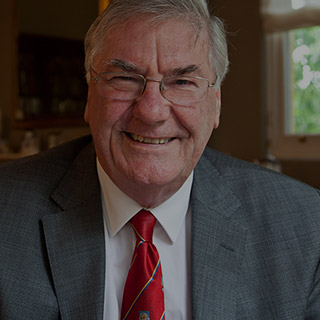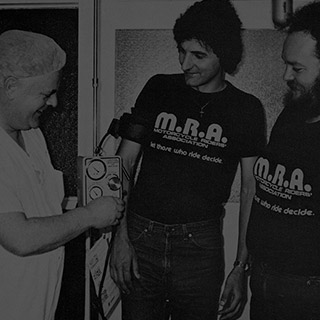Barry King
Vascular surgeon at Footscray Hospital 1969–2000
Mr King was born in 1935 in Melbourne and grew up in Newport. He was educated at North Williamstown State School and Melbourne Grammar and completed a medical degree at Melbourne University.
As a registrar at Chelmsford Hospital and the Post-Graduate Medical School, Hammersmith, in the UK in the late 1960s he worked with the legendary surgeon, Peter Martin, a pioneer in vascular surgery and a founder of the Vascular Surgery Society.
How the vascular unit was established
“When I was a registrar in England, vascular surgery was a new discipline so I became a vascular surgeon. But when I returned to Melbourne in 1969 I found there were no vascular surgery units in the city and I had to work as a general surgeon.
I started at Footscray in 1969, as Kendall Francis’s assistant, doing general surgery as well as vascular surgery. In 1976 I was appointed to a senior surgeon’s position at Footscray and decided to establish a specialist vascular unit at the hospital.
It takes a while to set up a unit because you’ve got to change the referral pattern of the GPs. At that time, almost all of the vascular cases passed Footscray and were sent to the Royal Melbourne or the Alfred.
Gradually a few emergency patients with vascular conditions turned up and I got a little bit of work referred to me. I also had rooms in Williamstown and the city and word got around that the standard of my work was ok and the numbers of patients started to build up.
I was still covering general surgery and emergency at that stage as well as doing all vascular emergencies. But the hospital’s medical superintendent Peter McCleave was very supportive and a few years later Terry Devine, who’d previously been my registrar at Prince Henry’s, was appointed to the unit. That helped a lot.
Our most common surgical cases were bypasses of the leg, aortic surgery, carotid surgery involving the main artery in the neck that leads to the brain and aortic surgery involving obstruction of the arteries, either for aneurysm or occlusive disease.
Because the western suburbs was an impoverished area, there were an awful lot of people who were heavy smokers and heavy drinkers, which meant they got arterial diseases.
Our vascular unit steadily grew as the number of patients grew. By the time I left the unit in 2000 it had expanded to four surgeons. It’s now the second biggest vascular unit in Victoria, second only in size to Royal Melbourne’s unit.”
International recognition for the unit
“In the mid 1990s the unit was accredited by the Australia and New Zealand Society for Vascular Surgery to become part of the Society’s three-year training program in vascular surgery. Since then many surgeons from Australia and overseas have trained at Footscray as part of the coursework required to qualify as a specialist in vascular surgery.”
Characters in surgery
“George Thoms was an obstetrician and gynaecologist at Footscray Hospital in the 50s and 60s and played test cricket for Australia. He played one game for Australia and opened the batting for Victoria.
He played just one game for Australia because he had to get on with his career, which he did very successfully.
He grew up in Yarraville in quite a poor family. He was much younger than his brother and sister and he had the opportunity to go to university. I remember talking to his elder brother Jim who was also a very good cricketer and played football for Footscray. Jim said, ‘I told George, ‘You’ve got an opportunity that we haven’t had, so you should take advantage of it’.
George took about 10 years to complete his medical course at Melbourne because of his cricketing commitments. You can’t do that anymore but George was an outstanding fellow.
George Robinson, the Director of Anaesthesia, was another great cricketer. He captained the Western Australian team against the visiting English team in the first cricket tour to Australia held after World War Two.”
How the unit pioneered bypass graft for diabetic patients
“There was an enormous incidence of diabetes in the west, especially in the Maltese community. This sparked a great deal of interest among the members of our unit.
In Boston in the late 80s, surgeons at the Harvard Massachusetts Diabetes Institute, had pioneered the use of bypass grafts for patients, a procedure which prevented patients from having a limb amputated due to diabetes.
I read an article in a journal of vascular surgery reporting that of 600 patients who’d had this bypass operation to salvage their limbs, 80 per cent of these operations were successful.
I went to Boston and watched what they did, came back home and we got cracking. Our unit pioneered bypass grafts right down to the ankle and foot in diabetic patients, with surprisingly good results in the late 1980s and early 1990s.
By the time I’d finished at Footscray, we’d done about 120 of these operations and we had a limb salvage rate of about 70 per cent, which was terrific.”

